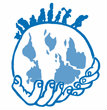Countries have failed to reach a landmark agreement on tackling plastic pollution after more than two years of negoti
Reports Search
BBC News
Read the report:
MLP
Thank you for the opportunity to speak.
Read the report:
South Centre
Our goal is clear: to craft an agreement of the highest caliber.
Read the report:
Medicines Law & Policy
A pandemic agreement will only be meaningful if its provisions contribute to changing the status quo.
Read the report:
South Centre
The World Health Organization (WHO) has resumed the negotiations for a legally binding international instrument on pa
Read the report:
HPW
Read the report:
HPW
Read the report:
GHF
Special index page with links to over 35 editions of GHF, including a series of exclusive stories, guest essays,
Read the report:
MLP
The World Trade Organization (WTO) Trade-Related Aspects of Intellectual Property Rights (TRIPS) Council will meet on
Pagination
- Previous page
- Page 2
- Next page
